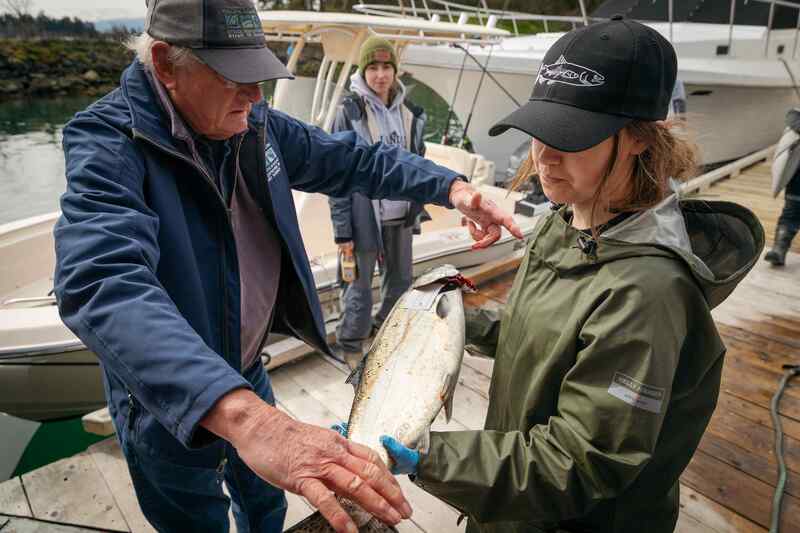Initial discussion of mackerel catches and the treatment of these catches was “civilized”. For those that are interested or like mackerels, they were either kept or otherwise released. Then the opinion of taking as many of these fish as you can. (and then proceed to kill them off and don’t release these fish alive come into light) to get rid of these mackerels, I find it’s important to look up more information on Pacific Jack Mackerel. As I would not like my kids to be misinformed, and just taking wrong actions.
These are just a part of what I found in respect to the distribution range of Pacific jack mackerel and it seems their range has been all the way to the Gulf of Alaska.
Pacific Jack Mackerel
From DFO
Mackerel (Scombridae)
Fairly abundant off west coast of Vancouver Island and Prince Rupert Harbour
Chub or Pacific mackerel: Average size: 45 cm but can reach 60 cm. Streamlined spindle shape. Two dorsal fins and five small finlets between second dorsal and tail
Jack mackerel: Bigger than Pacific mackerel, reaching 80 cm. Only one finlet following second dorsal fin
From NOAA
Range
* Pacific mackerel are found from southeastern Alaska to Mexico but are most common south of Point Conception, California
Habitat
* Pacific mackerel live within 20 miles of shore in water ranging from 50˚ to 72˚ F.
From Fishbase
DistributionCountries | FAO areas | Ecosystems | Occurrences | Point map | Introductions | Faunafri
Eastern Pacific: southeastern Alaska to southern Baja California, Mexico and the Gulf of California; reported from Acapulco in Mexico and the Galapagos Islands.
From Pacific fishery management council
Jack mackerel (Trachurus symmetricus) are a schooling fish that range widely throughout the northeastern Pacific. They grow to about 60 cm and can live 35 years or longer. Much of their range lies outside the 200-mile U.S. Exclusive Economic Zone (EEZ). Small jack mackerel (up to six years of age) are most abundant in the Southern California Bight. Older, larger fish range from Baja California to the Gulf of Alaska. In southern California waters, jack mackerel schools are often found over rocky banks, artificial reefs, and shallow rocky coastal areas. They remain near the bottom or under kelp canopies during daylight and venture into deeper surrounding areas at night. Young juvenile fish sometimes form small schools beneath floating kelp and debris in the open sea.
Small jack mackerel taken off southern California and northern Baja California eat large zooplankton, juvenile squid, and anchovy.
Large predators like tuna and billfish eat jack mackerel, but adult jack mackerel are probably a minor forage source for smaller predators. Older jack mackerel probably do not contribute significantly to food supplies of marine birds because they are too large to be eaten by most bird species, and they school too deep for birds to reach them. They do not appear to be an important food source for marine mammals.
From 1967 publication prepared by C.E. Blunt Jr. for the Annual Conference of the California Cooperative Oceanic Fisheries Investigations, Lake Arrowhead, California, 11-12 December 1967.
“ The northern extension of the range has been well documented by the high seas sampling program of the International North Pacific Fisheries Commission (INPFC). Significant numbers of large, adult jackmakerel were taken in a series of gill net sets during 1955 in the Gulf of Alaska as far north as lat. 57º30’N”
From Burke Museum of Natural History and Culture
The Jack Mackerel is the only species which occurs in Puget Sound. It is a pelagic jack which can be found near the surface or at depths up to 180 meters or more. It often swims in large schools and feeds on a variety of pelagic invertebrates and small fishes. This species is usually found offshore and is a rare visitor to Puget Sound.


